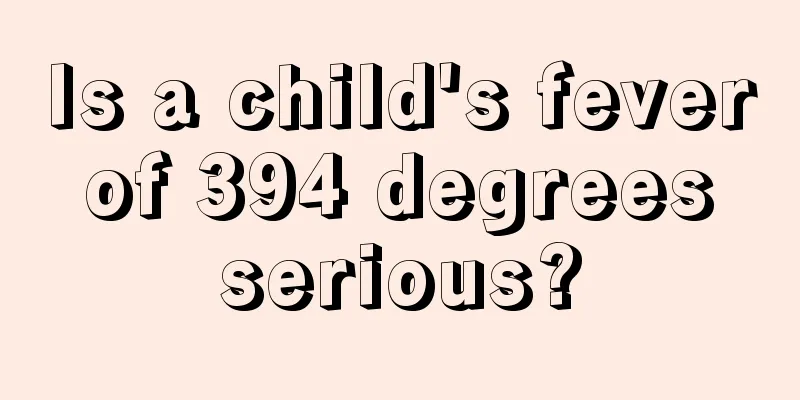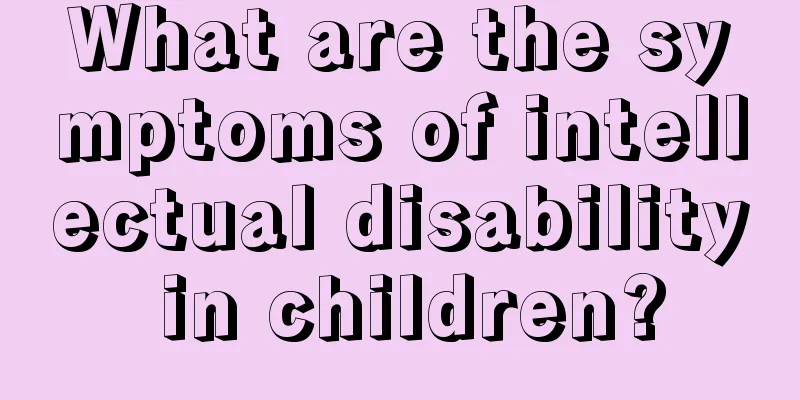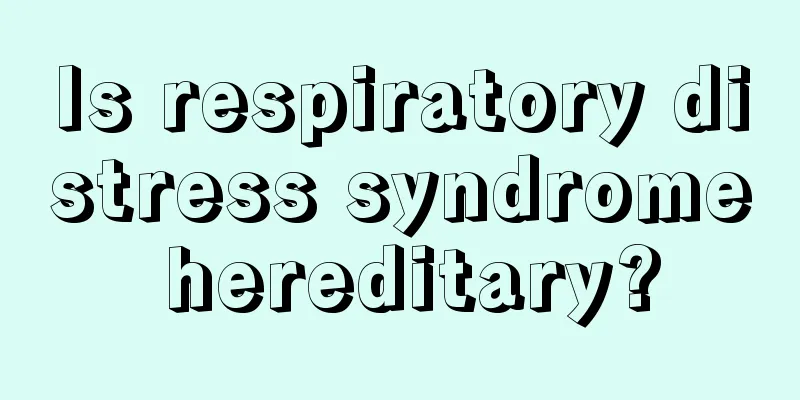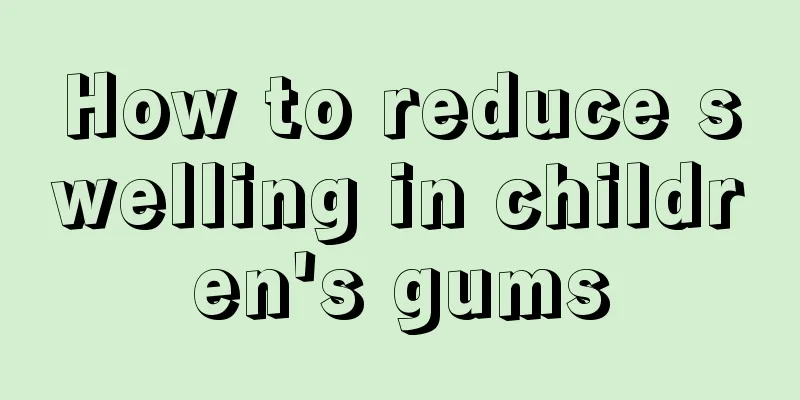Is a child's fever of 394 degrees serious?

|
People will get sick due to some factors in their daily lives, and some groups are more prone to diseases, namely the elderly and children, because these people have relatively poor resistance. Fever is especially common among children, but some children have more serious fevers and high temperatures, and we don’t know how to deal with it. So, is a child's fever of 394 degrees serious? First, is it serious if a child has a fever of 394 degrees? Fever in children is very common. Generally, if the fever is below 38.5℃, the child does not need to go to the hospital and only needs home care. When a child has a fever and the temperature is above 39 degrees, it is considered a high fever. Parents should take the child to see a doctor immediately and take timely antipyretic measures. A fever of 39 degrees is considered a high fever. Generally speaking, if the child's complexion is normal or flushed, he or she can be safely cared for at home; if the complexion is dull, yellow, blue, or purple, and the eyes are dull, it means that the condition is serious. When a child has a fever, parents should not blindly reduce the fever. Instead, they should go to the hospital to find out the cause of the fever and provide appropriate treatment based on the results. Because fever is a normal defense reaction of the body, colds, leukemia, and even other diseases can all show symptoms of fever. Second, a high fever of 39 degrees is indeed serious, and most people mistakenly believe that a high fever that does not subside will damage the brain. In fact, whether high temperature can damage the brain is related to the temperature and duration. Only when the body temperature exceeds 42 degrees and persists for a long period of time will the body's proteins begin to denature and cause direct damage to the brain! Most of the things that affect intelligence and brain development are meningitis or hypoxic encephalopathy caused by constant convulsions. These are all due to the course of the disease itself, not the temperature; and most of these diseases will have symptoms of persistent high fever (even if the temperature is below 42 degrees). This has led to the common misconception that high fever can damage the brain. The basic way to distinguish between the two is to observe the child's appetite and energy. In the case of serious infections such as meningitis or sepsis, children will have poor appetite and activity, become drowsy all the time, and may vomit if the intracranial pressure increases. Therefore, when a child has a fever, parents must "observe the child's words and expressions" and seek medical attention immediately if they find the above symptoms. Is it serious if a child has a fever of 394 degrees? If a child has a fever of 39 degrees or above for a long time, he must go to the hospital. Sometimes, more serious illnesses may only be around 38 degrees Celsius. Therefore, when a child has a fever, parents should observe the child's complexion, mental state, and whether there are any convulsion symptoms. Fever is just one of the symptoms of the disease. What is more important is to find out the cause of the fever. When your child's temperature reaches the following degrees, please go to the hospital immediately: 1. 3 months (or younger): 37.9℃. 3 to 6 months: 38.3℃. 6 to 24 months: 39.4℃. 2 years old: 40℃. Note: If your child's temperature is above 37°C late at night but does not reach the values listed above, you can wait until the early morning to measure it and make a decision. |
<<: What should I do if my child has a fever of 405 degrees?
>>: What to do if a 2-year-old child is scalded
Recommend
Is congenital heart disease surgery expensive for children?
Congenital heart disease is a long-term disease t...
The child is one and a half years old and still can't walk
In the process of a child's growth and develo...
What’s going on when my baby has red spots on his chest and back?
Many babies are born with very sensitive skin. So...
What to eat to increase breast milk secretion
In order to ensure that the newborn has enough mi...
What are the reactions to BCG in newborns?
In many areas, newborns must be vaccinated after ...
What to do if you are born with amblyopia?
Now we live in a high-tech society. People are st...
How to stop the baby's cough at night?
Although it is very common for children to cough,...
Why does my child’s back itch?
Children's skin is very sensitive and easily ...
What are the precautions for babies to bask in the sun?
Regular sunbathing has certain benefits for the b...
Recurrent episodes of hand, foot and mouth disease
Hand, foot and mouth disease usually occurs in au...
What is the reason for newborns to have fat particles?
Fat particles are a very common phenomenon in nor...
Treatment for vomiting in six-month-old babies
Recently, the phenomenon of six-month-old babies ...
What kind of exercise can help children grow taller?
Children's height is affected by the genetic ...
What's wrong with the child's convulsions?
Children are always prone to various physical pro...
Preventive nursing of newborn virus pneumonia
The care of newborns should be taken very serious...









